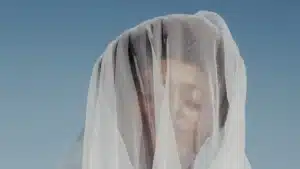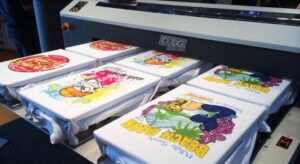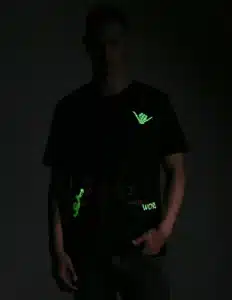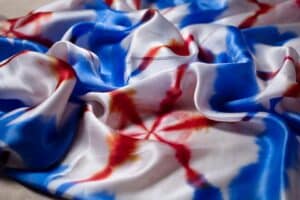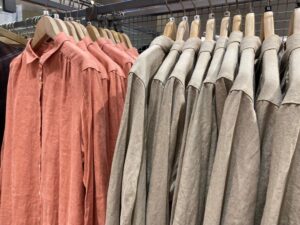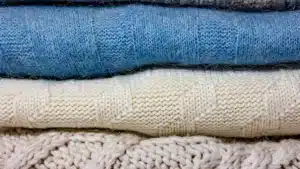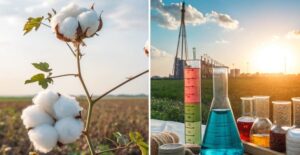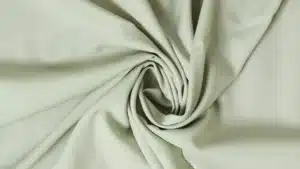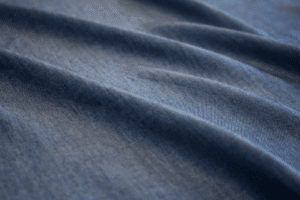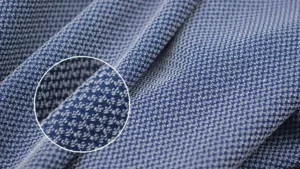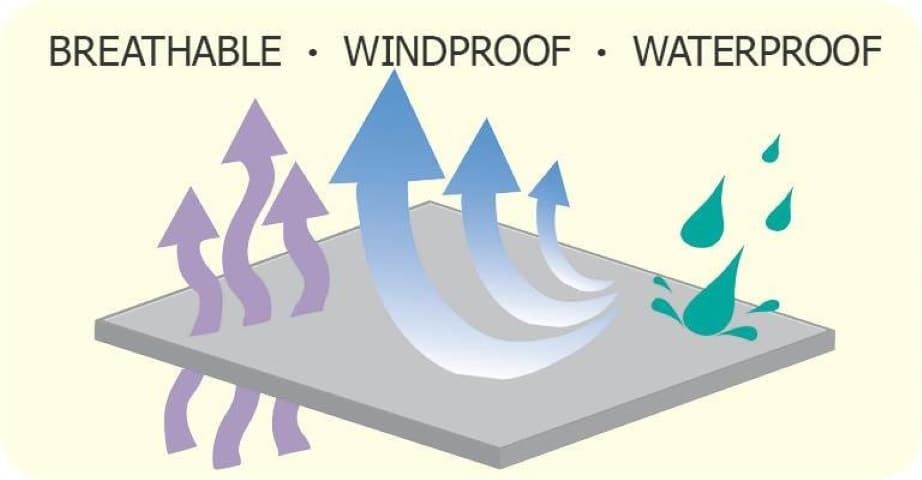
Waterproof breathable fabrics block water but let sweat escape. This special feature keeps you dry and comfy in tough weather. These fabrics are important for outdoor clothes, sports gear, and medical items. Worldwide, the market for these fabrics may grow to $3.38 billion by 2033, thanks to better materials. Whether hiking, working, or resting at home, these fabrics keep you safe and comfortable.
Key Takeaways
Waterproof breathable fabrics keep you dry by stopping water but letting sweat out. This is important for outdoor fun and sports.
Pick fabrics with waterproof ratings over 10,000mm for heavy rain. For active sports, choose breathability ratings above 15,000 g/m²/24h.
Synthetic fabrics like polyester and nylon are strong and great for outdoor use. Natural fibers like wool and cotton feel comfy in mild weather.
Choose eco-friendly fabrics like Eco-Shell and Futurelight. These use recycled materials and avoid bad chemicals, helping the planet and working well.
Check your waterproof fabrics often to keep them working. Clean them and add water-repellent treatments to make them last longer.
Understanding Waterproof Breathable Fabrics
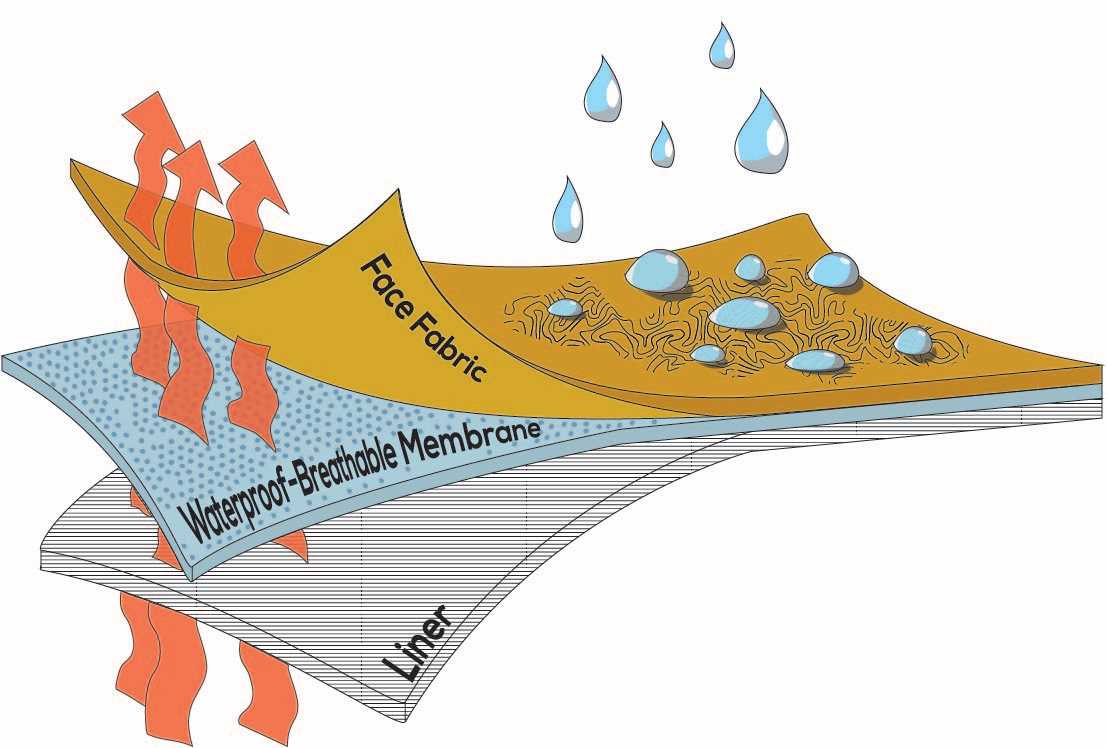
What is Waterproof Breathable Fabric?
Waterproof breathable fabrics keep you dry by stopping water. They also let sweat escape, keeping you comfortable. These fabrics use smart designs to protect and feel good. For example, tight weaves and special coatings block water. Materials like polyester and nylon work well because they resist moisture.
Not all waterproof fabrics are alike. Some are only water-resistant. These can handle light rain but may soak water over time. Fully waterproof fabrics stop water completely. This difference matters when picking fabrics for outdoor activities like hiking or skiing.
Waterproofness Rating of Fabric
The waterproof level of fabric is tested with the hydrostatic head test. This test shows how much water pressure a fabric can handle before leaking. For example, a fabric rated 10,000mm can hold back a 10-meter water column.
Measurement Type | Description | Unit |
|---|---|---|
Hydrostatic Head (HH) | Shows how tall a water column the fabric can block. | mm |
Moisture Vapor Transfer Rate (MVTR) | Measures how much water vapor passes through the fabric in a day. | g/sqm/24hrs |
Top waterproof fabrics often have ratings over 10,000mm. These are great for harsh weather. Such fabrics are used in outdoor clothing and sports gear where strength and water resistance are key.
Breathability Rating of Fabric
Breathability lets sweat leave the fabric, keeping you comfy. It is measured by the Moisture Vapor Transmission Rate (MVTR). This shows how much water vapor passes through in 24 hours. Fabrics with MVTR over 15,000 g/m²/24h are very breathable.
The fabric's structure also affects breathability. Tight weaves block air more, while loose ones allow airflow.
When choosing breathable waterproof fabrics, think about your activity and weather. High breathability is important for active sports like running or climbing to avoid sweat discomfort.
Types of Waterproof Breathable Fabrics
Waterproof fabrics come in different kinds, each with special uses. Knowing these types helps you pick the best one for your needs.
Natural Fibers (e.g., ELS Cotton, Wool)
Natural fibers like ELS cotton and wool are eco-friendly choices. Wool has a natural coating called lanolin that resists water. This makes it good for light rain or damp weather. ELS cotton, when woven tightly, blocks water while allowing some air to pass.
These fabrics are great for casual outdoor use. But they may not work well in heavy rain. People often choose natural fibers for their comfort and environmental benefits in mild conditions.
Synthetic Fibers (e.g., Polyester, Nylon, Microfiber)
Synthetic fibers are popular because they are strong and last long. Polyester and nylon are lightweight, tough, and resist water. Microfiber, a finer synthetic material, is soft but still water-resistant.
Research shows 100% polyester sportswear helps athletes by managing sweat. With 68% water vapor permeability, polyester keeps the body cool. Nylon is very durable, making it perfect for rough outdoor activities.
Coated Fabrics (e.g., PUL, TPU, Vinyl, Oilcloth)
Coated fabrics have a layer that improves waterproofing. PUL and TPU coatings block water but allow some air to pass.
Vinyl and oilcloth are other coated options. Vinyl is fully waterproof, great for rain gear and table covers. Oilcloth has a waxy finish that repels water and looks vintage. Coated fabrics are useful for both fashion and practical items.
Tip: Think about your activity and weather when choosing waterproof fabrics. Synthetic fibers are great for performance, while coated fabrics are reliable for daily use.
Type | Description |
|---|---|
Tightly Woven | Made from long cotton fibers, leaving tiny gaps for air. |
Microporous | Coated with tiny holes that let sweat out but block water. |
Nonporous | Made with films that absorb and re-evaporate sweat, stopping water. |
Laminated Fabrics (e.g., Gore-Tex, eVent, Sympatex, Pertex)
Laminated fabrics are made by layering materials together. These layers include a waterproof membrane and an outer fabric. This keeps the fabric light but strong, with great waterproof and breathable features.
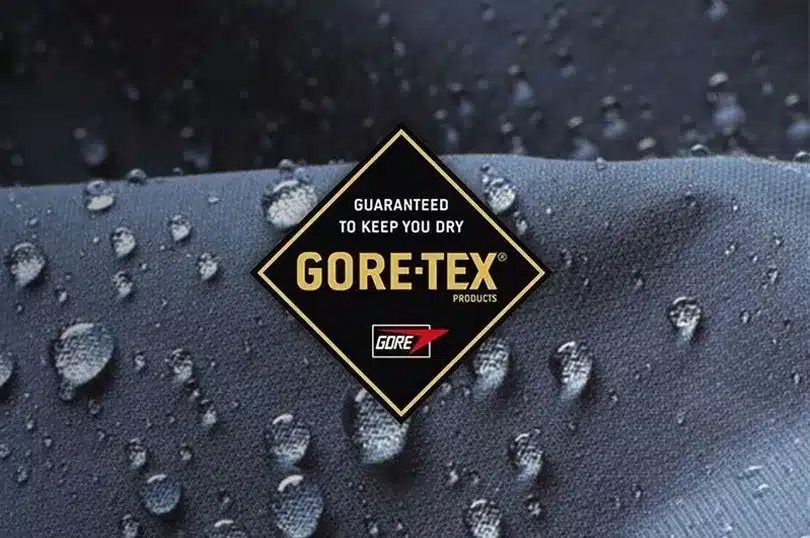
Gore-Tex is a famous laminated fabric. It has tiny holes in its membrane that block water but let sweat out. There are different types of Gore-Tex for various needs:
Gore-Tex Pro: Best for tough weather and outdoor adventures. It is very strong and waterproof.
Gore-Tex Active: Great for sports that make you sweat a lot. It allows more air to pass through.
Gore-Tex Infinium: Focuses on comfort and blocking wind, perfect for daily wear.
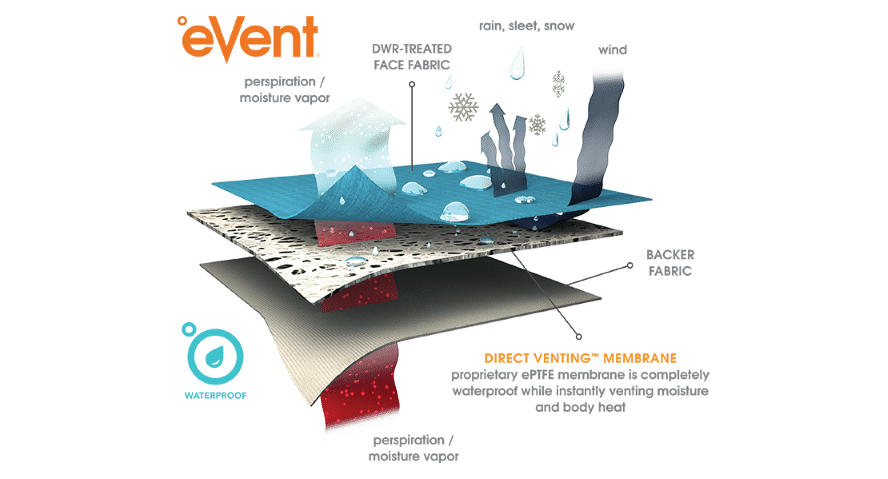
Other laminated fabrics like eVent and Sympatex also work well. eVent uses a special venting system to release sweat faster. Sympatex is eco-friendly and can be fully recycled, making it a green choice. Laminated fabrics are ideal for people who love outdoor activities and need dependable waterproof gear.

Tip: Think about your activity and weather when picking laminated fabrics. For tough adventures, choose Gore-Tex Pro. For sports, Gore-Tex Active is a better fit.
Specialized Fabrics (e.g., Dermizax, Eco-Shell, Futurelight)
Specialized fabrics use new technology to improve waterproofing. They are designed for specific needs.
Dermizax, for example, has a stretchy membrane that moves with you. This makes it great for skiing or climbing, where flexibility matters.
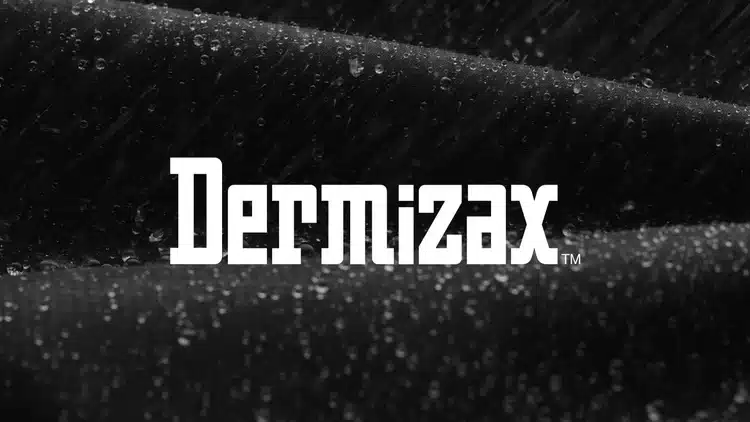
Eco-Shell is focused on being eco-friendly. It uses recycled materials and avoids harmful chemicals. It is waterproof and breathable, making it good for hiking or camping.
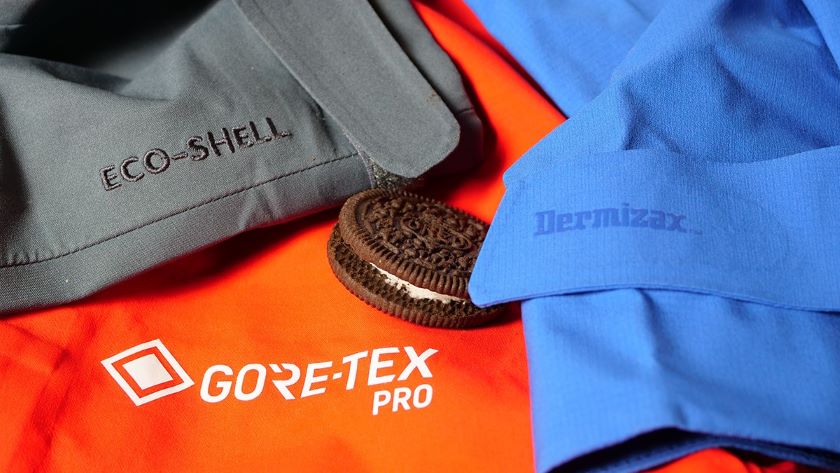
Futurelight is another option that combines waterproofing with breathability. It uses stretchy membranes and recycled fabrics, keeping you comfy during active sports.
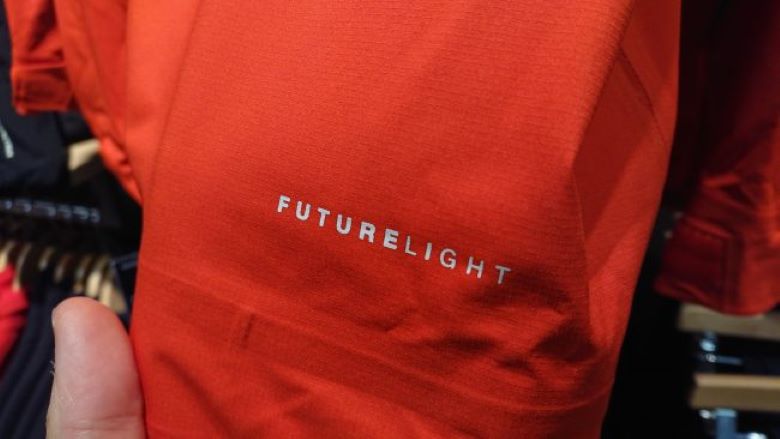
Main Features of Specialized Fabrics:
Dermizax: Stretchy and tough for active sports.
Eco-Shell: Green and useful for outdoor adventures.
Futurelight: Light and airy for intense activities.
These fabrics balance performance with caring for the planet. They are perfect for staying dry while helping the environment.
Note: If you care about the planet, Eco-Shell and Futurelight are great picks. They mix waterproofing with eco-friendly materials.
Technologies Behind Waterproof Breathable Fabrics
Membranes
Membranes are key parts of waterproof fabrics. They block water but let sweat escape. This keeps you dry and comfy. Waterproof membranes, like those made from PU (polyurethane) or PVDF (polyvinylidene fluoride), are strong and light. These materials are great for outdoor clothing and gear.
Tests like the Hydrostatic Head (HH) check how much water pressure a membrane can handle. The Moisture Vapor Transmission Rate (MVTR) test measures how much sweat vapor passes through. New membranes made with electrospinning use tiny fibers to improve waterproofing and breathability. This makes them work well in tough weather.
Coatings
Waterproof coatings are added to fabrics to repel water. They also make fabrics last longer. Common coatings include polyurethane (PU) and quaternary ammonium-based types. These coatings not only block water but also fight germs and viruses.

Studies show coated fabrics work better than uncoated ones. For example:
Coating Type | Stops Viruses (%) | Stays Strong | Lasts Longer (%) |
|---|---|---|---|
Quaternary Ammonium-based Coating | Very Strong | 99.55 ± 0.11 | |
Non-coated Textiles | 64.38 ± 14.14 | Not Tested | Not Tested |
This table shows how coatings improve fabric use, making them good for outdoor and medical needs.
Nano-Spinning Technology
Nano-spinning is a new way to make better fabrics. It creates tiny fibers that improve waterproofing and breathability. These fibers are light but strong, keeping you dry and comfy.
Research on nanocomposites has made fabrics even better. For example:
Advancement Type | What It Does | Key Results |
|---|---|---|
Nano-Coating | Adds tiny particles to fabrics | |
Composite Membranes | Combines materials for better results | Better UV protection and filtering abilities |
Nano-spinning makes fabrics tough and useful. Whether hiking in rain or playing sports, this tech keeps you dry and comfortable.
Testing for Waterproofing and Breathability
Testing checks if waterproof fabrics work as they should. These tests show how well fabrics block water and let sweat out. They help you pick the right fabric for your needs.
The hydrostatic head test is used to check waterproofing. It measures how much water pressure a fabric can handle before leaking. A higher rating means better waterproofing. For instance, a fabric rated 20,000mm can handle heavy rain and strong water pressure.
Breathability tests measure how much sweat vapor passes through a fabric. The Moisture Vapor Transmission Rate (MVTR) is the main test. It shows how much sweat escapes in 24 hours. Higher MVTR means better breathability, which is great for sports and outdoor clothes.
Standardized tests ensure waterproofing and breathability results are accurate. These tests use averages, variations, and other measures to confirm reliability. Labs also compare results to ensure consistency. A 95% confidence interval shows the results are trustworthy. Here’s a simple table of these measures:
Statistical Measure | What It Means |
|---|---|
Mean | The average result from all tests |
Standard Deviation | How much the results differ from each other |
Coefficient of Variation | Compares the variation to the average result |
Interlaboratory Tests | Tests done in different labs to check consistency |
95% Confidence Interval | Range where the true result is likely to be 95% of the time |
These tests make sure waterproof fabrics perform well. Whether for rain or sports, tested fabrics meet your needs.
Tip: Look at waterproof and breathability ratings when buying outdoor gear. These ratings keep you dry and comfy in any weather.
Applications of Waterproof Breathable Fabrics
Waterproof breathable fabrics are used in many industries. They provide comfort and protection in different settings. These fabrics are found in outdoor clothes, camping gear, home items, and medical products.
Outdoor Clothing and Accessories

These fabrics are key for outdoor clothes, shoes, and gloves. They block rain and wind but let sweat escape. This keeps you comfy during activities like hiking or skiing. Materials like ePTFE are great because they are both waterproof and breathable.
Benefits of waterproof fabrics in outdoor clothing:
Keep you dry in bad weather.
Last long for tough use.
Let sweat out during sports.
More people want waterproof clothes because they are durable and useful. Studies show the market for these fabrics is growing fast.
Camping and Outdoor Gear
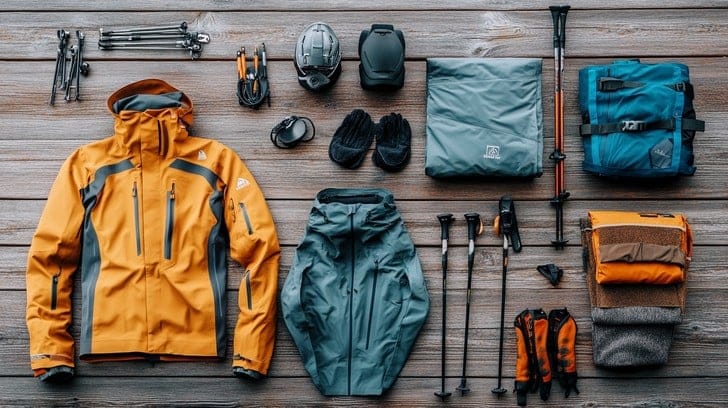
Camping gear depends on waterproof breathable fabrics. Tents, sleeping bags, and backpacks made with these materials stay dry but allow airflow. New membrane technology helps manage moisture, making outdoor trips better.
Brands like GORE-TEX and eVent lead the way with reliable gear. Whether camping in rain or hiking in heat, these fabrics keep your gear dry and useful.
Home and Medical Products
These fabrics are also used in homes and hospitals. Waterproof mattress covers and bed sheets stop spills but allow air to pass. A waterproof mattress protector keeps your mattress dry and lasts longer.
In healthcare, these fabrics are used in protective clothing and bedding. They block liquids and germs while staying breathable for comfort. Their flexibility makes them important for both home and medical use.
Tip: Choose waterproof home items that are both strong and breathable for better comfort.
Automotive and Upholstery Uses
Waterproof breathable fabrics are important for cars and furniture. They are strong, comfy, and protect against spills and damage. Car interiors and furniture stay safe from stains and moisture with waterproof upholstery. This is helpful for vehicles facing bad weather or heavy use.
In cars, these fabrics make seats last longer. They stop liquids from soaking in, preventing mold and bad smells. Many cars now use advanced waterproof materials that also breathe. This keeps seats comfy during long trips. For example, polyester with a polyurethane coating is often used. It resists water and is easy to clean.
Furniture makers also use waterproof fabrics. Sofas, chairs, and outdoor furniture resist spills and stains. This makes them great for families and pet owners. Outdoor furniture needs fabrics that handle rain and humidity well. Laminated and coated fabrics are popular for these uses.
Waterproof upholstery is both useful and stylish. Today, you can find many colors and textures to match your style. Whether for car seats or furniture, these fabrics are a smart choice.
Tip: Pick waterproof upholstery that is durable, easy to clean, and breathable. These features keep it comfy and long-lasting.
Sustainability Aspects of Waterproof Breathable Fabrics
Use of Recycled Materials (e.g., Eco-Shell, Futurelight)
Recycled materials help make waterproof fabrics more eco-friendly. Many brands now use recycled polyester and organic cotton to create greener options. For example, Eco-Shell and Futurelight fabrics use recycled fibers to cut waste. These materials still work well while being better for the environment.
Using recycled fabrics saves resources and reduces the need for new materials. It also lowers energy use during production. When you buy products made from recycled fabrics, you support a healthier planet.
Fluorocarbon-Free and Biodegradable Options (e.g., Ceplex, Sympatex)
Fluorocarbons in waterproof coatings harm nature. They break down slowly and can pollute water. To fix this, brands like Ceplex and Sympatex offer fluorocarbon-free fabrics. These materials are waterproof without using harmful chemicals.
Biodegradable fabrics are another green choice. They break down naturally and leave no harmful waste. Sympatex is both fluorocarbon-free and recyclable. Choosing these fabrics helps reduce pollution and supports cleaner production.
Tip: Look for "fluorocarbon-free" or "biodegradable" labels when buying waterproof gear. These are better for the environment.
Environmental Impact and Innovations
Making waterproof fabrics has become more eco-friendly. Companies now use renewable energy and save water during production. New technologies like nanotechnology and smart textiles improve fabric performance while reducing harm to nature.
The global market for waterproof breathable fabrics is growing by over 7% each year. This shows more people want sustainable and high-quality materials. Here’s a quick summary:
Evidence Type | Description |
|---|---|
Market Growth | The market for breathable waterproof fabrics grows over 7% yearly. |
Innovations | Nanotechnology and smart textiles improve fabric quality and use. |
Sustainability | Recycled polyester and organic cotton are widely used. |
These changes show the industry is becoming greener. By choosing eco-friendly fabrics, you help support this positive progress.
Choosing the Right Waterproof Breathable Fabric
Factors to Consider
Picking the best waterproof breathable fabric depends on a few things. Each factor helps your gear work well in different situations.
Waterproofness: Choose fabrics with high hydrostatic head ratings. A rating over 10,000mm protects you from heavy rain. This is important for outdoor activities like hiking or camping.
Breathability: Pick fabrics with high breathability, measured in g/m²/24h. Ratings above 15,000 g/m²/24h let sweat escape, keeping you comfy during active sports.
Durability: Look at the fabric layers. A 3-layer fabric lasts longer than a 2.5-layer one. Fully taped seams and waterproof zippers also make it stronger.
Budget: Match your needs with your budget. Gore-Tex is great but costs more. Cheaper options like BD.dry still perform well for less money.
Tip: Think about your activity. For sweaty sports, focus on breathability. For bad weather, waterproofness and durability matter most.
Comparison of Popular Fabrics
When comparing fabrics, Gore-Tex and eVent are top picks. Both work well but have different strengths.
Feature | Gore-Tex | eVent |
|---|---|---|
Waterproofness | High rating; great for heavy rain. | Similar waterproofing; handles rain well. |
Breathability | Lets sweat out; good for active sports. | Better breathability; releases sweat faster. |
Durability | 3-layer design lasts longer. | Less durable; better for light use. |
Cost | Expensive but high quality. | Cheaper; good value for money. |
Gore-Tex is strong and versatile, perfect for tough adventures. eVent is better for breathability, ideal for running or climbing.
Note: For rough weather, Gore-Tex is dependable. For sports needing airflow, eVent is more comfortable.
Waterproof and breathable fabrics help you stay dry and comfy. They are used in outdoor gear, sports clothes, and medical items. These fabrics block water but let air pass, making them great for hiking, camping, and healthcare.
Choosing eco-friendly fabrics can also help the planet. Options like Eco-Shell and Sympatex are waterproof and made with green materials. Using these fabrics supports both performance and the environment.
Did you know? Waterproof fabrics are popular because they work in many ways, from helping athletes to improving medical care.
FAQ
What makes a fabric waterproof and breathable?
Waterproof fabrics stop water using special layers or coatings. Breathable fabrics let sweat vapor escape through tiny holes. This keeps you dry and comfy during activities.
How do you clean waterproof breathable fabrics?
Wash with mild soap and cold water. Don’t use bleach or softeners. Let it air-dry or use low heat in a dryer. Always follow the care label instructions.
Can waterproof fabrics lose their effectiveness?
Yes, dirt and wear can weaken waterproofing over time. Add a water-repellent spray to restore it. Cleaning regularly also helps keep it working well.
Are natural waterproof fabrics as effective as synthetic ones?
Natural fabrics like wool repel water but don’t work well in heavy rain. Synthetic fabrics, like Gore-Tex or polyester, are better for tough weather and last longer.
How do you choose the right fabric for outdoor activities?
Think about the weather and your activity. For heavy rain, pick fabrics with high waterproof ratings. For sports, choose breathable ones. Strong fabrics with sealed seams are best for rough conditions.

